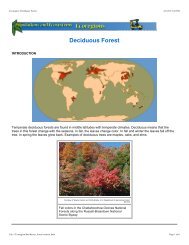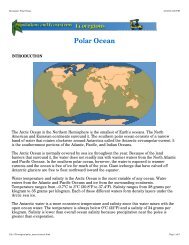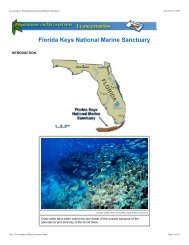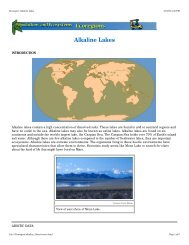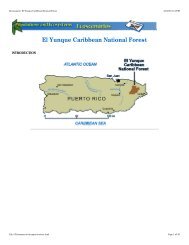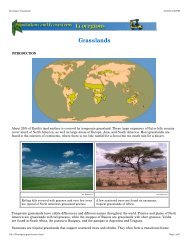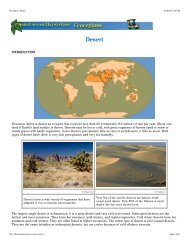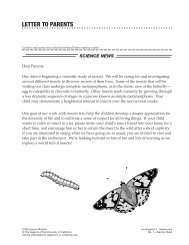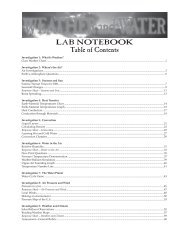Ecoscenarios Combined - FOSSweb
Ecoscenarios Combined - FOSSweb
Ecoscenarios Combined - FOSSweb
Create successful ePaper yourself
Turn your PDF publications into a flip-book with our unique Google optimized e-Paper software.
Ecoscenario: Yellowstone National Park<br />
4/16/03 3:25 PM<br />
Geothermal pools bubble and steam with water heated by a<br />
magma body deep underground.<br />
Art Explosion<br />
Art Explosion<br />
Geysers push hot water and steam up<br />
to 55 meters (180 feet) into the air.<br />
The first known inhabitants of the Yellowstone area were the Sheepeater Indians, a band of Shoshone. The area was<br />
used by other bands of Native Americans as they traveled through the valleys, but only the Sheepeaters made<br />
permanent settlements here. The Minnetaree called the river Mi tsi a da zi or Rock Yellow River, because of the<br />
yellow canyon walls, and French fur trappers translated it to Yellow Stone.<br />
John Colter was the first European American to describe Yellowstone. In 1805 Colter was scouting for the Lewis and<br />
Clark expedition when a Native American guide known as Old Toby led him through the Yellowstone area. His<br />
descriptions of geysers and other geothermal features were met with wonder and disbelief. The area was nicknamed<br />
Colter's Hell.<br />
Mountain men, fur trappers, and gold prospectors visited Yellowstone in the following years. In 1870 an expedition led<br />
by Ferdinand V. Hayden, the head of the newly established U.S. Geological Survey, entered Yellowstone to explore<br />
and document the region. Artist Thomas Moran and photographer William H. Jackson accompanied the group.<br />
Moran's watercolors and Jackson's photographs finally conveyed the beauty and wonder of Yellowstone to the world.<br />
On March 1, 1872, President Ulysses S. Grant signed the bill that established Yellowstone National Park and set<br />
aside 899,121 hectares (2,220,829 acres) as the first wilderness area for "the benefit and enjoyment of the people."<br />
The park became a popular spot for sportsmen and hunters to visit and soon began to show signs of poaching and<br />
vandalism. In 1894, Congress passed the Lacey Act which gave protection to all wildlife in Yellowstone, except for<br />
wolves and coyotes.<br />
file:///Ecoscenario/yellow/content.html<br />
Page 3 of 15



